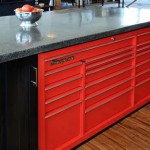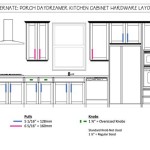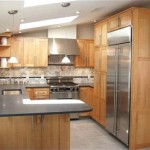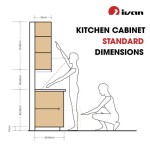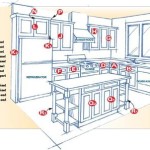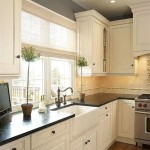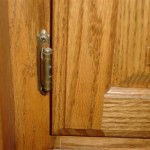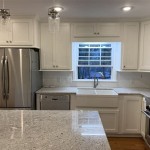How To Paint Cabinets Antique White With Glaze
Painting kitchen cabinets antique white with a glaze finish is a transformative project capable of updating the aesthetic appeal of any kitchen. This process, while requiring patience and attention to detail, can be completed by those with moderate DIY skills and offers a significantly more cost-effective alternative to replacing existing cabinetry. The resulting finish provides a timeless, elegant look that blends seamlessly with various design styles.
The antique white base color offers a soft, off-white hue that creates a warm and inviting atmosphere. The glaze, applied strategically to highlight details and recesses, adds depth and dimension, mimicking the natural aging and wear that characterize antique furniture. The transformation brings a sense of character and history to the cabinets, elevating the overall design of the kitchen. Proper preparation, selection of appropriate materials, and precise application techniques are crucial for achieving professional-looking results that will withstand the test of time.
Key Point 1: Preparation - The Foundation for a Durable Finish
Proper preparation is the most critical step in ensuring a long-lasting and aesthetically pleasing finish. This phase encompasses cabinet removal, thorough cleaning, sanding, and priming. Neglecting any of these steps can compromise the adhesion of the paint and glaze, leading to chipping, peeling, or an uneven final appearance.
The initial step involves removing all cabinet doors and drawers. Labeling each piece with corresponding cabinet locations is essential to facilitate easy reinstallation. All hardware, including hinges, knobs, and handles, should be removed and stored in a safe place. This prevents them from becoming covered in paint and allows for a clean, seamless finish on the cabinet surfaces. If desired, this presents an opportunity to update hardware for an even more substantial transformation.
Thorough cleaning is paramount to remove any grease, grime, or residue that may have accumulated on the cabinets over time. Using a degreasing cleaner specifically designed for kitchen surfaces is highly recommended. Trisodium phosphate (TSP) is a powerful cleaner, but safety precautions, including wearing gloves and eye protection, should be observed when using it. Rinse the cabinets thoroughly with clean water after cleaning to remove any remaining cleaner residue. Allow the cabinets to dry completely before proceeding to the next step.
Sanding is crucial for creating a slightly roughened surface that the primer can adhere to. Use a medium-grit sandpaper (around 120-grit) to lightly sand all surfaces of the cabinet doors, frames, and drawer fronts. Focus on removing any existing glossy finish. After sanding, use a fine-grit sandpaper (around 220-grit) to smooth out any rough edges or imperfections. Remember to sand with the grain of the wood to avoid creating scratches. Vacuum away all sanding dust and wipe the surfaces with a tack cloth to ensure they are completely clean.
Priming is the final step in the preparation process. A high-quality primer is essential for sealing the wood, providing a uniform surface for the paint, and ensuring proper adhesion. Choose a primer specifically designed for cabinets, ideally an oil-based or shellac-based primer, as these offer excellent adhesion and stain-blocking properties. Apply a thin, even coat of primer using a brush, roller, or spray gun. Allow the primer to dry completely according to the manufacturer's instructions before proceeding to the painting stage. Lightly sand the primed surface with fine-grit sandpaper to remove any imperfections and create a smooth surface for painting.
Key Point 2: Painting and Glazing - Achieving the Antique White Aesthetic
Once the cabinets are properly prepared, the painting and glazing process can begin. The selection of paint and glaze products, as well as the application techniques, will significantly impact the final appearance of the cabinets.
Choose a high-quality acrylic latex paint in an antique white shade. Acrylic latex paint is durable, easy to clean, and provides a smooth, even finish. Consider using a paint specifically designed for cabinets and trim, as these paints typically offer superior adhesion and resistance to chipping and scratching. Apply two thin, even coats of paint, allowing each coat to dry completely according to the manufacturer's instructions. Using a brush, roller, or spray gun will influence the quality and finish. A spray gun typically provides the smoothest finish, but requires practice and proper ventilation. Lightly sand between coats with fine-grit sandpaper (around 320-grit) to remove any imperfections and ensure a smooth, professional-looking finish.
Glazing is the key to achieving the antique look. Choose a glaze that complements the antique white paint. A brown or umber-toned glaze is commonly used to create a warm, aged appearance. Water-based glazes are easier to work with and clean up, while oil-based glazes offer a richer, more durable finish. Before applying the glaze to the entire cabinet, test it on an inconspicuous area to ensure the desired effect is achieved. Apply the glaze liberally to the cabinet surfaces using a brush, rag, or sponge. Work quickly, as the glaze can start to dry relatively quickly.
After applying the glaze, use a clean rag or sponge to wipe away the excess. The goal is to leave the glaze in the recesses, corners, and details of the cabinets, highlighting their architectural features and creating the illusion of age. Experiment with different wiping techniques to achieve the desired effect. For a more subtle effect, wipe away more of the glaze. For a more pronounced effect, leave more glaze on the surface. A dry brush can also be used to soften the edges of the glaze and create a more blended look. Consider using artist brushes to apply glaze to intricate details.
Allow the glaze to dry completely according to the manufacturer's instructions. Once the glaze is dry, apply a clear topcoat to protect the finish and provide added durability. Choose a topcoat that is compatible with the paint and glaze used. Water-based topcoats are a good option for acrylic latex paint and water-based glazes, while oil-based topcoats are suitable for oil-based paints and glazes. Apply two thin, even coats of topcoat, allowing each coat to dry completely before applying the next. Lightly sand between coats with fine-grit sandpaper to remove any imperfections and ensure a smooth, durable finish.
Key Point 3: Reinstallation and Final Touches for a Polished Result
Once the painting and glazing are complete and the topcoat has fully cured, the final step involves reinstalling the cabinet doors, drawers, and hardware. This stage is crucial for ensuring that the cabinets function properly and that the overall appearance is polished and professional.
Begin by carefully reattaching the hinges to the cabinet doors and frames, making sure they are aligned correctly. Use the labels that were applied during the removal process to identify the corresponding locations for each cabinet door. Ensure that the screws are tightened securely but not over-tightened, as this can strip the wood. Adjust the hinges as needed to ensure that the cabinet doors hang straight and close properly. If necessary, use shims to correct any alignment issues.
Reinstall the drawer fronts onto the drawer boxes, again using the labels to ensure proper placement. Make sure the drawer fronts are aligned correctly and that the screws are tightened securely. Test the drawers to ensure they slide in and out smoothly. If necessary, adjust the drawer slides to correct any alignment issues. Clean any spilled glaze or dried paint on the drawer boxes.
Reattach the hardware, such as knobs and handles, to the cabinet doors and drawers. Consider using new hardware to update the look of the cabinets and complement the antique white finish. Ensure that the hardware is securely attached and that the screws are tightened properly. If using new hardware, measure and drill new holes as needed. Consider using a template to ensure consistent placement of the hardware.
Once all the cabinet doors, drawers, and hardware are reinstalled, inspect the cabinets for any imperfections or touch-ups that may be needed. Use a small brush to touch up any areas where the paint or glaze has been scratched or chipped. Clean the cabinets with a mild cleaner and a soft cloth to remove any dust or fingerprints. Step back and admire the transformed cabinets. The antique white finish with glaze should provide a timeless and elegant look that will enhance the beauty of the kitchen for years to come.

How To Glaze Kitchen Cabinets Diyer S Guide Bob Vila

How To Glaze Cabinets At Home With The Barkers

Cabinet Refinish Diy Simple Paint And Antique Glaze Kitchen Cabinets

White Cabinets With Antique Glazing Repainting Kitchen Glazed Renovation

Painted Kitchen Cabinet Details Antique White Cabinets Renovation

17 Best Antique White Cabinets Combinations For Most Fascinating Looks In Your Kitchen Off

How To Glaze Cabinets At Home With The Barkers

Classic Kitchen General Finishes Design Center

Dover White With Brown Sugar Glaze 2 Cabinet Girls

Antique White Kitchen Makeover Distressed Cabinets Stained
Related Posts

